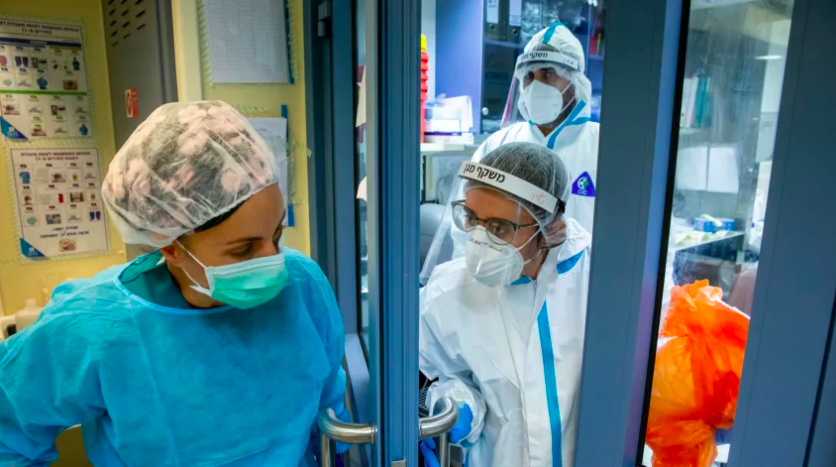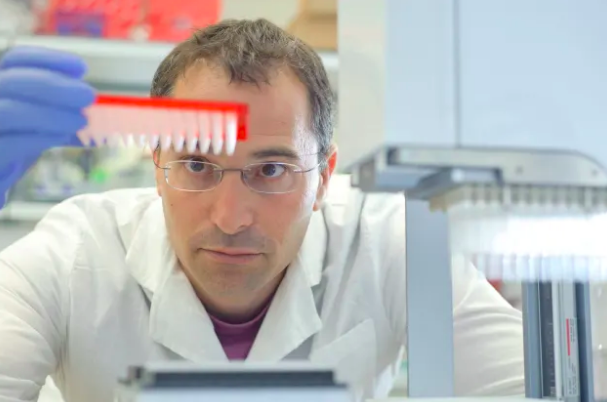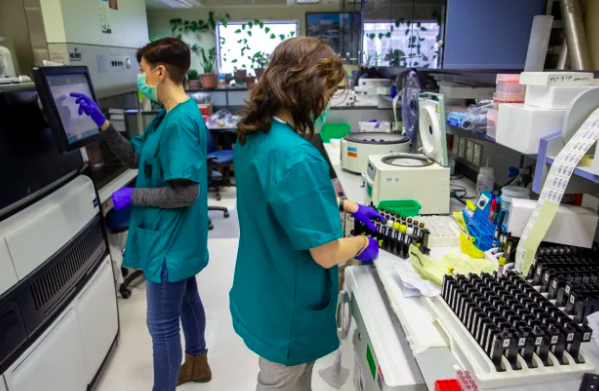
Researchers in Israel have succeeded in determining the biological processes that characterize seriously ill COVID-19 patients, as compared to those who are only mildly affected. The researchers, headed by Prof. Ido Amit from the Department of Immunology at the Weizmann Institute of Science in Rehovot, examined the differences between those who were seriously ill and lightly ill. They based their analysis partly on the virus’ activity at the single cell level.
In the lungs of seriously ill patients, they found that macrophages – cells that normally assist in ridding the lungs of infection, viruses and microbes – are replaced by cells that exacerbate the illness. The researchers also found that in seriously ill patients, the coronavirus neutralizes the immune system’s T-cells, which also fight infections, thereby allowing other viruses that are present in the body to inflict their damage.
The study was done in collaboration with researchers from China, and was published on Friday in the prestigious journal Cell.
The key question of what differentiates biological processes and the actions of the immune system in severely ill COVID-19 patients as opposed to those who are slightly ill has been occupying researchers and physicians since the virus was first detected. The researchers behind the study hope that a deeper understanding of the factors leading to a patient’s deterioration will help find weak spots in the chain of reactions initiated by the virus in severe cases, paving the way for effective treatments that would prevent or significantly curtail the impact of the disease.

The pattern of the disease among people who are hit hard is quite clear: After a week of mild symptoms, there is a rapid and sharp deterioration in their condition, characterized by hyperactivity of the immune system called a cytokine storm. This hyperactivity leads to serious damage to a patient’s health, often leading to a collapse of multiple systems, including the heart, liver and kidneys. In the lungs, the disease is characterized by damage to macrophage cells, whose role is to clear the lungs of infections.
In the study, which was assisted by research assistants Amir Giladi and Pierre Bost, researchers used state-of-the-art genomic technologies which included a method known as single-cell genomics, an area developed and led by Prof. Amit. The virus is composed of the genetic RNA material surrounded by a protein envelope that attaches to cells and lets the RNA invade them. This then causes changes in the cell, which lead to the virus replicating itself. This technology enables precise mapping of cellular activity at a given moment through genetic sequencing of the entire viral RNA.
By obtaining a picture of the cell at a given moment, one can compare the differences between the activity of cells invaded by the coronavirus in severely and lightly affected individuals. Researchers can see which cells and genes are activated and which cells are silenced, thus learning about changes in inter-cellular communication and about cells that are activated by the virus in areas where it is active.
The study analyzed hundreds of thousands of cells that were taken from the lung fluid of seriously ill patients, slightly ill patients and healthy people. The researchers discovered which types of cells are invaded by the virus and learned about its pathway. They found that the virus usually attacks epithelial cells, which in the lungs are responsible for respiration by enabling transport of oxygen from the air to the blood. “Due to the infection, the whole immune environment of the lungs undergoes a total transformation” explains Amit.
The study showed that in patients who are severely hit by the virus, there is a dramatic effect on the immune system as compared to patients who are only slightly affected. In the former, macrophages in the lung tissue are replaced by other immune system cells. “We found that they are replaced by monocytes, blood cells which accelerate a cytokine storm. They are recruited from the circulation as part of the overreaction of the immune system,” explains Amit.

The researchers found an enhanced presence of polypeptide cytokines called IL-6 and IL-8 in seriously ill patients. These cytokines are usually released by the monocytes, serving to either augment or suppress inflammation according to need. In this case, they facilitate inflammation. “The cytokine storm produced by the virus prevents the immune system in these patients from launching adaptive processes which are required for mounting an appropriate immune response,” says Amit. “In other studies we’re involved in, together with researchers from China and Italy, we see enhanced cytokine levels in the blood of severely ill patients before any pathological signs are evident.”
Another change that accompanies the cytokine storm involves the activity of T-cells. “In contrast to patients with light symptoms, seriously ill patients have T-cells that are neutralized and inactive,” says Amit. The researchers found that this dramatic change causes indirect damage, such as infection by other viruses which the immune system had previously managed to repulse.
In response to a question about differences in the medical background of people who are severely affected, Amit says that they assume that “the lung epithelial cells in these patients were predisposed to damage for various reasons, such as preexisting condiitons, smoking or other sensitivities, thereby affording less support for the macrophages in their lungs, which constitute a critical part in protecting the tissue. There are great differences when comparing this to what happens with the flu. Epithelial cells are also infected with the flu, but there is no concomitant damage to macrophages in the lung or their replacement with other immune system cells.”
The researchers are now developing clinical studies that will use treatments to protect macrophages, with the hope that they will be able to prevent a deterioration in patients who are mildly impacted by the virus.
